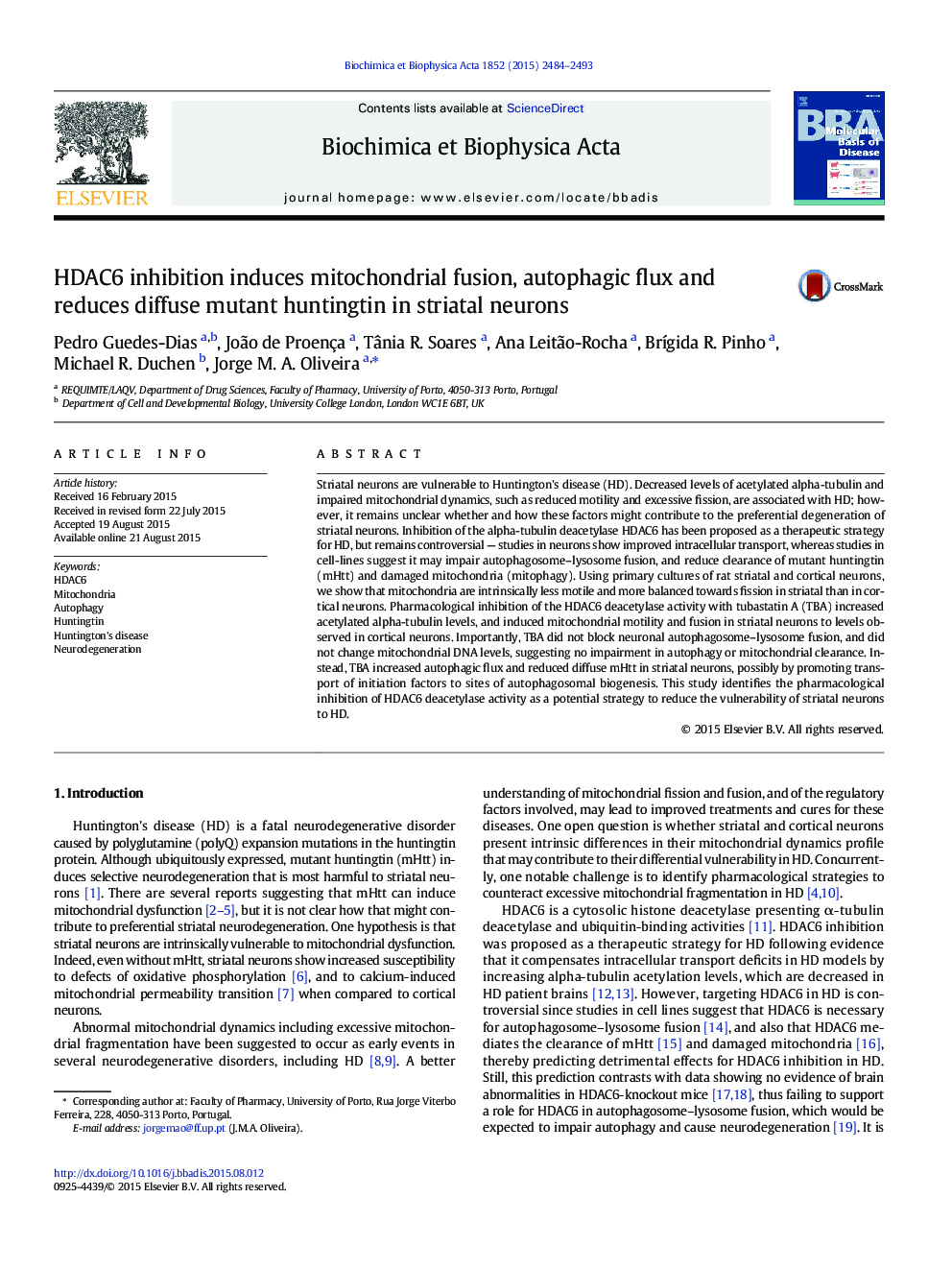| Article ID | Journal | Published Year | Pages | File Type |
|---|---|---|---|---|
| 1904556 | Biochimica et Biophysica Acta (BBA) - Molecular Basis of Disease | 2015 | 10 Pages |
Abstract
Striatal neurons are vulnerable to Huntington's disease (HD). Decreased levels of acetylated alpha-tubulin and impaired mitochondrial dynamics, such as reduced motility and excessive fission, are associated with HD; however, it remains unclear whether and how these factors might contribute to the preferential degeneration of striatal neurons. Inhibition of the alpha-tubulin deacetylase HDAC6 has been proposed as a therapeutic strategy for HD, but remains controversial - studies in neurons show improved intracellular transport, whereas studies in cell-lines suggest it may impair autophagosome-lysosome fusion, and reduce clearance of mutant huntingtin (mHtt) and damaged mitochondria (mitophagy). Using primary cultures of rat striatal and cortical neurons, we show that mitochondria are intrinsically less motile and more balanced towards fission in striatal than in cortical neurons. Pharmacological inhibition of the HDAC6 deacetylase activity with tubastatin A (TBA) increased acetylated alpha-tubulin levels, and induced mitochondrial motility and fusion in striatal neurons to levels observed in cortical neurons. Importantly, TBA did not block neuronal autophagosome-lysosome fusion, and did not change mitochondrial DNA levels, suggesting no impairment in autophagy or mitochondrial clearance. Instead, TBA increased autophagic flux and reduced diffuse mHtt in striatal neurons, possibly by promoting transport of initiation factors to sites of autophagosomal biogenesis. This study identifies the pharmacological inhibition of HDAC6 deacetylase activity as a potential strategy to reduce the vulnerability of striatal neurons to HD.
Related Topics
Life Sciences
Biochemistry, Genetics and Molecular Biology
Ageing
Authors
Pedro Guedes-Dias, João de Proença, Tânia R. Soares, Ana Leitão-Rocha, BrÃgida R. Pinho, Michael R. Duchen, Jorge M.A. Oliveira,
